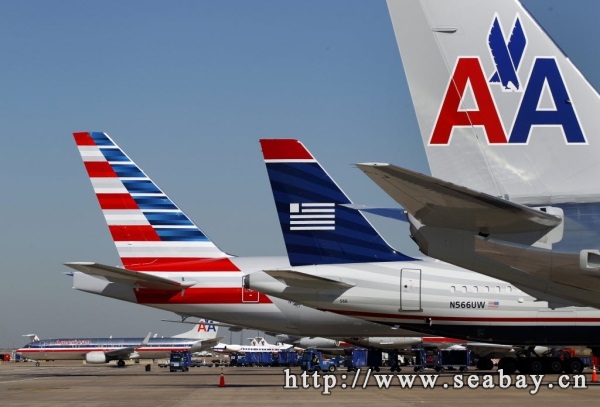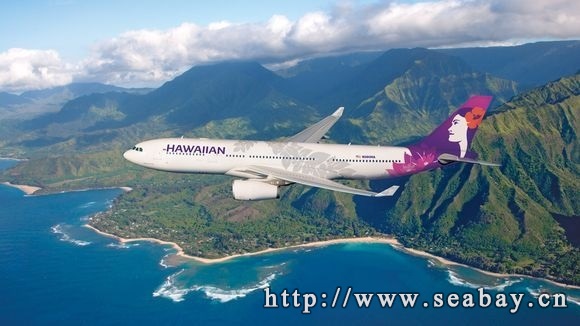Reasons and Impacts of American Airlines Enterprises Eliminating Multiple Sino-US Routes
Following the announcement by American Airlines in May of a direct flight between Chicago and Beijing in October this year, on August 21st, the US local time announced that it plans to cancel the direct service between Chicago and Shanghai on October 25. Hawaiian Airlines also decided to temporarily suspend the three-shift weekly service from Honolulu to Beijing after the Chinese Golden Week holiday this year. Together with the Hangzhou-San Francisco route that United Airlines was grounded last year and the Xi'an-San Francisco route that has been grounded this year, within a year, the US airlines plan to cancel or have cancelled five Sino-US routes.
“Chicago Airport is a very profitable hub, but the two routes in Beijing and Shanghai have brought huge losses,” explains Vaso Ruijie, vice president of airline network planning for American Airlines. And rising oil prices have further worsened the situation. According to the Kline Chicago Business website, aviation fuel prices have risen by more than 30% in the past year.
It is worth noting that, as part of the strategy of American Airlines' optimized route network, in addition to canceling these two Chinese routes, the company also reduced its capacity on the Tokyo-Chicago route, from one shift per day to three shifts per week. .
This means that American Airlines' Asian strategy has undergone major adjustments: it will rely on its main hubs, Dallas Fort Worth Airport and Los Angeles Airport, as its gateway to the Asian market and the Western Hemisphere. Los Angeles Airport is able to provide enough local market visitors, while Dallas Fort Worth Airport is its main operating base and one of the most profitable airports in the world. American Airlines will continue to maintain the Beijing, Shanghai to Dallas, Los Angeles routes.

For the direct flight from Honolulu to Beijing, Hawaiian Airlines did not give too many reasons, just saying that the route "demand growth is less than expected."
In fact, the deep-seated reasons for the cancellation of these Sino-US routes by the two US airlines are mainly the problem of excess capacity. The direct consequence of excess capacity is the “price war” and reduced passenger load, which can lead to a decline in airline revenues, and even unsustainable.
The data shows that the average passenger load factor of the American Airlines Shanghai Pudong-Chicago route reached 79.7% in 2017, but its passenger traffic has been declining year by year since 2012. Passenger traffic in 2017 decreased by 1.14% year-on-year, which is a decline of 9.78 compared with 2015. %.
Since the launch of the Hawaiian Airlines route, the passenger load factor has been poor, with an average passenger load factor of less than 60%. In 2017, passenger traffic reached 46,382 passengers, down 11.7% year-on-year.
In recent years, with the gradual rise of Chinese airlines and the gradual relaxation of the “one international carrier can only have one Chinese carrier” regulations, China’s aviation enterprises have continuously increased their capacity, and have opened new routes between China and the United States. Models, upgrading software and hardware service facilities, deepening cooperation with partners, and spare no effort to "make a share in the lucrative China-US aviation market."
This trend has become increasingly evident after 2014. With the successive delivery of the new generation of aircraft Boeing 787 and Airbus A350, more and more Chinese and American airlines have opened more Sino-US routes in China's second-tier cities, such as the United Airlines opened in Xi'an-San Francisco and Hangzhou-San Francisco. Xiamen Airlines opened Fuzhou-New York and Xiamen-Los Angeles, HNA opened Chengdu-New York and Chongqing-New York, Changsha-Los Angeles, and Sichuan Airlines opened Jinan-Los Angeles. This not only aggravated the excess capacity of the Chinese and American aviation markets, but also further diverted the passenger sources of the Sino-US routes originating from Beijing and Shanghai, causing certain operational pressure on the Beijing and Shanghai routes.

United Airlines President Scott Kobe has said that after a few years of weakness in its Beijing and Shanghai routes, it is now starting to pick up, but the revenue per seat mile is still below the level of two or three years ago.
According to industry insiders, these Sino-US routes originating from second-tier cities in China are mainly maintained by local government financial subsidies.
From the perspective of Chinese airlines, sometimes the opening of international routes will have a "market incubation period" for a certain number of years, mainly to increase market share, regardless of whether it is profitable at one time.
But for US airlines, the main purpose of opening routes is to make money. If you don't make money, you must stop operating from a business operation perspective. To this end, United Airlines as the largest US carrier on the US-China route, last year suspended the Hangzhou-San Francisco route and this year suspended Xi'an-San Francisco. The company explained this because the passenger flow growth did not meet the company's expectations. Currently, United's destinations in mainland China are only Beijing, Shanghai and Chengdu.
In addition, it is worth noting that the composition of the source of passengers on the Sino-US route is also undergoing significant changes. Walter Dias, managing director of United Airlines Greater China and South Korea, said in an interview with this reporter earlier this year that since 2010, the demand for Chinese travelers to the United States has risen sharply. In 2014, the company was On the Sino-US route, the number of Chinese passengers transported exceeded the number of US passengers for the first time. In 2016, the growth rate of Chinese passengers reached 15%.
And this trend is still going on. According to the Boyd Group's market forecast, Chinese passengers in the United States are expected to increase from 4.3 million this year to nearly 12.8 million in 2024, and will change from former group passengers to more and more individual travelers.
"US aviation companies are at a disadvantage. Now, the market demand for China-US routes is mostly dominated by Chinese passengers, and this will definitely give Chinese airlines a more favorable competitive advantage." Mike Bo, President of Boyd Group Ide pointed out.
Disclaimer: Some articles are sourced from the Internet and submitted by users. This website is only responsible for organizing, formatting, and editing articles. It is for the purpose of transmitting more information. It does not mean agreeing with its opinions or confirming the authenticity of its contents. .


































